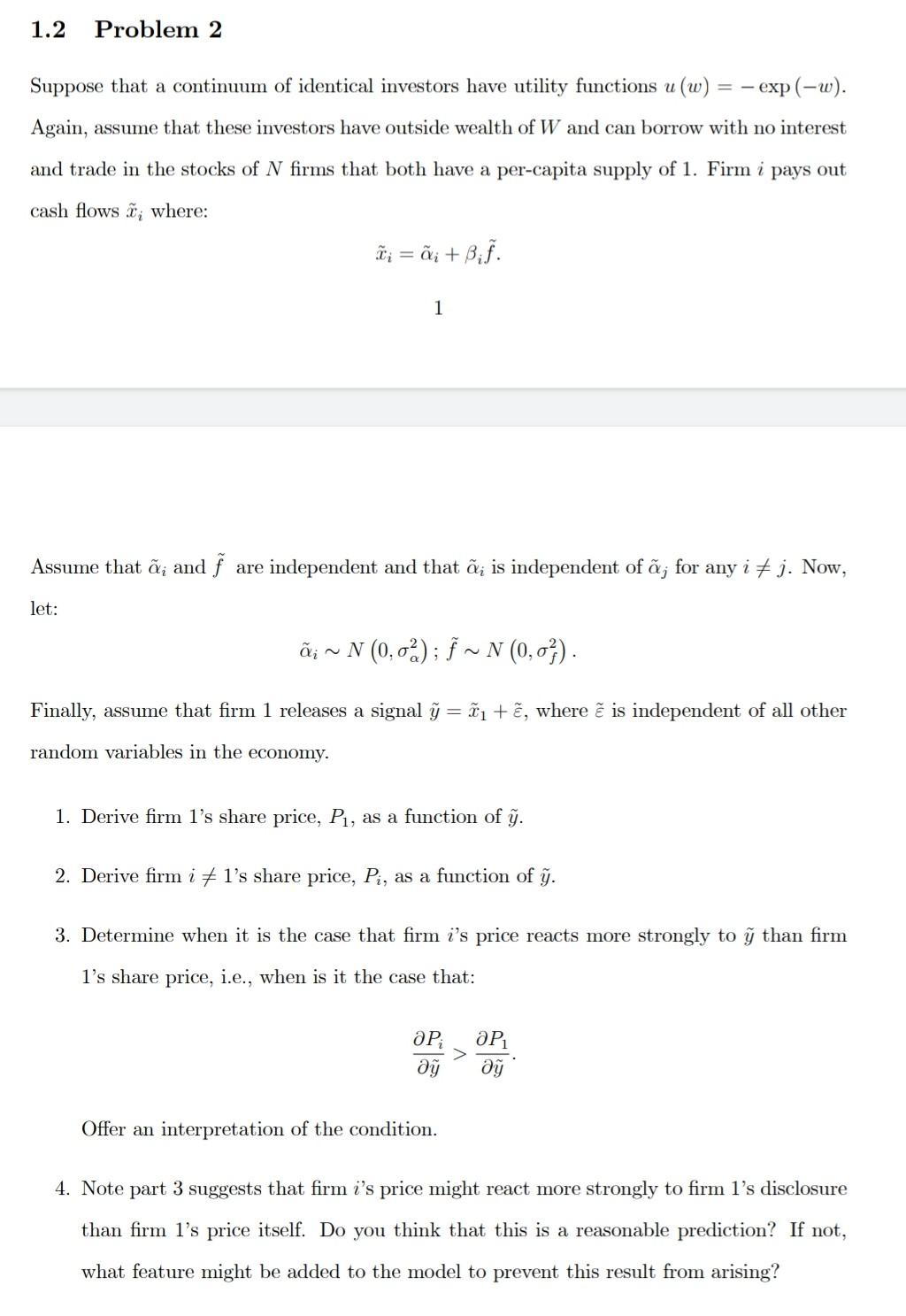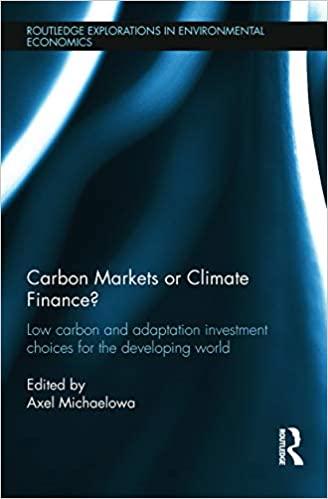Answered step by step
Verified Expert Solution
Question
1 Approved Answer
1.2 Problem 2 Suppose that a continuum of identical investors have utility functions u (w) - exp(-w). Again, assume that these investors have outside wealth

1.2 Problem 2 Suppose that a continuum of identical investors have utility functions u (w) - exp(-w). Again, assume that these investors have outside wealth of W and can borrow with no interest and trade in the stocks of N firms that both have a per-capita supply of 1. Firm i pays out cash flows f; where: i = li +Bif. 1 Assume that ; and f are independent and that ; is independent of ; for any i # j. Now, let: N (0,0%); f ~ N (0,01). Finally, assume that firm 1 releases a signal j =i + , where is independent of all other random variables in the economy. 1. Derive firm l's share price, P1, as a function of j. 2. Derive firm i #l's share price, Pi, as a function of y. 3. Determine when it is the case that firm i's price reacts more strongly to than firm l's share price, i.e., when is it the case that: , ay ay Offer an interpretation of the condition. 4. Note part 3 suggests that firm i's price might react more strongly to firm l's disclosure than firm l's price itself. Do you think that this is a reasonable prediction? If not, what feature might be added to the model to prevent this result from arising? 1.2 Problem 2 Suppose that a continuum of identical investors have utility functions u (w) - exp(-w). Again, assume that these investors have outside wealth of W and can borrow with no interest and trade in the stocks of N firms that both have a per-capita supply of 1. Firm i pays out cash flows f; where: i = li +Bif. 1 Assume that ; and f are independent and that ; is independent of ; for any i # j. Now, let: N (0,0%); f ~ N (0,01). Finally, assume that firm 1 releases a signal j =i + , where is independent of all other random variables in the economy. 1. Derive firm l's share price, P1, as a function of j. 2. Derive firm i #l's share price, Pi, as a function of y. 3. Determine when it is the case that firm i's price reacts more strongly to than firm l's share price, i.e., when is it the case that: , ay ay Offer an interpretation of the condition. 4. Note part 3 suggests that firm i's price might react more strongly to firm l's disclosure than firm l's price itself. Do you think that this is a reasonable prediction? If not, what feature might be added to the model to prevent this result from arising
Step by Step Solution
There are 3 Steps involved in it
Step: 1

Get Instant Access to Expert-Tailored Solutions
See step-by-step solutions with expert insights and AI powered tools for academic success
Step: 2

Step: 3

Ace Your Homework with AI
Get the answers you need in no time with our AI-driven, step-by-step assistance
Get Started


